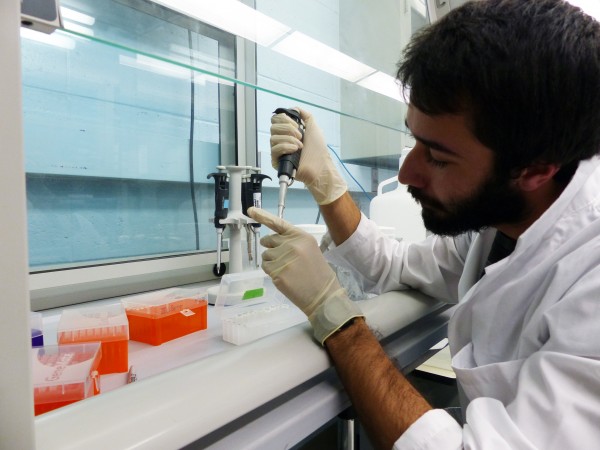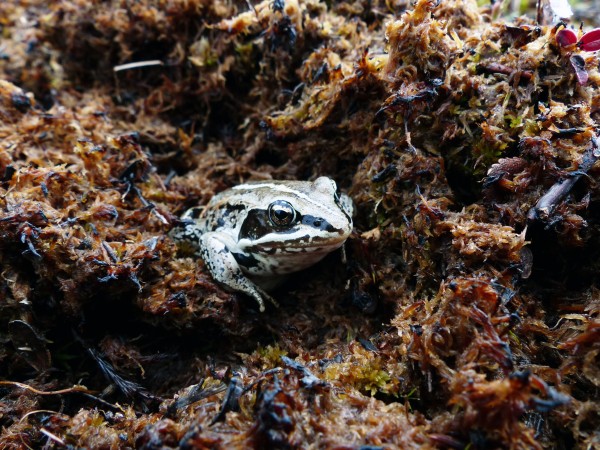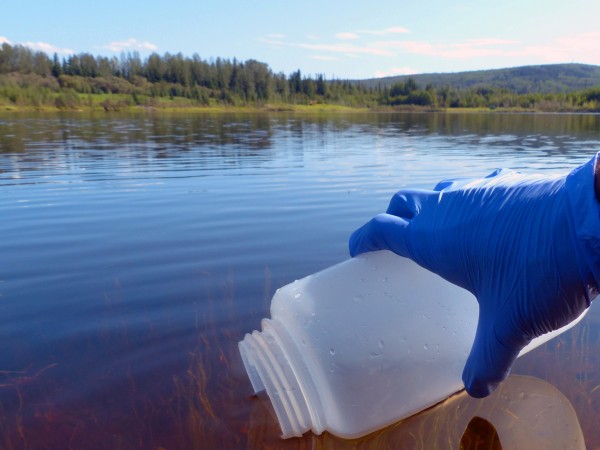Trail of eDNA helps uncover mysteries of Alaska wildlife
February 15, 2016
Theresa Bakker
907-474-6941
Imagine exploring a wooded site along an Alaska stream or lake for evidence of animals.
Maybe you’ll see moose prints in the soil or a bit of wolf fur in a berry bush. But
some species don’t leave footprints.
They still leave a clue. It’s their DNA.

Mark Spangler is a graduate student at the University of Alaska Fairbanks. He came north after meeting his advisor, Falk Huettmann from the Institute of Arctic Biology, at a three-week field course in Central America.
“My dream was to do tropical herpetology, but Alaska was an amazing opportunity,” he said. “There aren’t many people doing amphibian research here, so I am able to break new ground.”
Contrary to what many believe, there are amphibians in Alaska. The state has six species: two salamanders, two frogs, one newt and a toad. Four are limited to Southeast Alaska. The toad is found as far north as the Alaska Range and west to Anchorage.
And then there is the wood frog, found nearly statewide. “They make use of the boreal wooded forests, but they are generalists,” Spangler said. “They can survive in tundra. Any habitat is open for wood frogs.”
The farther north wood frogs get, the more limited the season to do everything they need to be a frog — breeding, developing and then preparing for winter. Wood frogs, like all amphibians, are considered an indicator species, the first to change habits and habitat due to climate change or environmental hazards. To monitor their numbers, first you need to know where they are.
One clue is in the DNA they leave behind. Living things constantly shed cells and tissues. Dead things decompose and their tissues break down. In both cases the process of decay releases DNA molecules into the surroundings. This is called environmental DNA, or eDNA.
Spangler is working with Andrés López, curator of fishes, marine invertebrates, amphibians and reptiles at the University of Alaska Museum of the North, to assess the northern distribution of the wood frog. He said eDNA is one tool to figure out how far north they occur.
Detecting a species from the DNA it has left behind requires a couple of special lab tricks. First, Spangler isolates and purifies DNA from a water sample by filtering and chemically removing substances that can interfere with the species detection test. Next, he uses a chemical reaction similar to the one that copies DNA in living cells to make copies from the target species.

The key ingredient in this step is a pair of short DNA molecules, called primers, designed to exclusively target wood frog DNA. If DNA molecules from the target species are not present in the sample, no copies are made.
López said the reaction is very sensitive and can find even a tiny number of target DNA molecules to copy.
“One of the main challenges in designing eDNA tests for species detection is finding the sections of the target species’ DNA that are unique,” he said. “These sections serve as targets for the DNA copying reagents, almost like a magnet binds to a piece of metal. Targets that are not unique can lead to false detections.”
Spangler had to design his own wood frog-specific primers, squeezing in tests after class and on sample days. It took six months.
“It’s like cooking,” he said. “There are things you can tinker with. Temperature. Ingredients. If you don’t have all of that quite right, it’s a lot of trial and error. When you already have the recipe, you don’t have to go through that again.”
Targeting eDNA means scientists have a reliable technique to better understand the range of habitat for a particular species. From there the applications are broad. Sometimes eDNA can help managers test theories about the health of a species.
Allison Martin, a UAF graduate student working with López and Jeff Falke at the School of Fisheries and Ocean Sciences, is using eDNA to study juvenile salmon habitat and help answer broader question about the factors linked to chinook salmon declines. This is a big deal because chinook salmon are valued by a broad set of communities across Alaska.

She uses eDNA in combination with fish habitat studies to establish a baseline so scientists and managers can evaluate changes in critical habitat and better understand how the freshwater life stage affects chinook abundance. “We’re using it to estimate distribution of juveniles at the tributary scale," she said. "One reason (for chinook declines) might be failures in freshwater habitats affecting the ability of enough juveniles to migrate out to the ocean."
Martin said eDNA can help assess where juvenile salmon are. This information will allow managers to direct further research and protect critical habitat from increasing threats.
So far, she said, the prognosis for the technique is good.
“I was able to detect chinook eDNA from tributaries in 2014, when the river was basically flooded all summer,” Martin said. “I did snorkel surveys that year and never saw a single fish. But the assay was able to detect chinook DNA in those water samples.”


